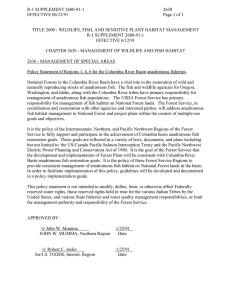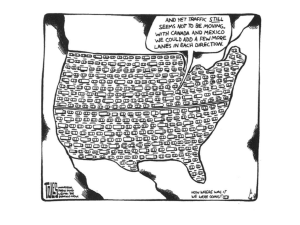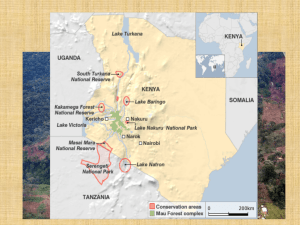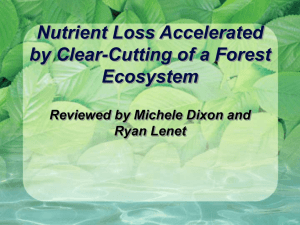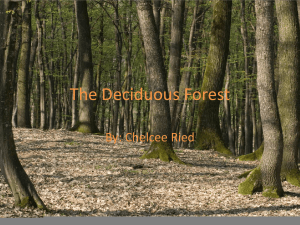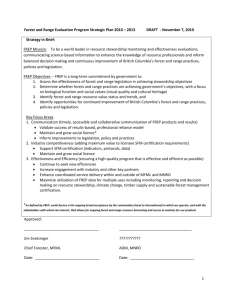powerpoint for OPEN December meeting on Enviro
advertisement
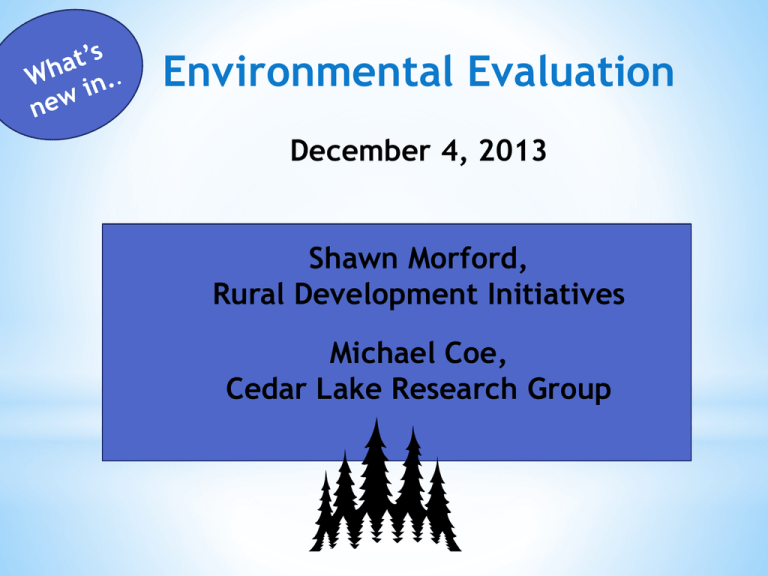
Environmental Evaluation December 4, 2013 Shawn Morford, Rural Development Initiatives Michael Coe, Cedar Lake Research Group Topics 1) The growing field of environmental and conservation evaluation and introduction to EEN 2) Examples of environmental and conservation evaluation projects & what is different from other evaluation? 3) The 2013 Pacific Forum of the Environmental Evaluation Network- what we learned 4) Discussion: Creating a community of environmental evaluators in the Northwest Introductions Your name and affiliation Your interest/connection with Environmental Evaluation (why you came). Are you currently doing any work in Environmental Evaluation? The Challenge: Contested decision space evaluation data is sparse Many different approaches to research and evaluation unique natural resource and environmental issues “Understanding and improving effectiveness and efficiency in the environmental sector” “To improve the field of environmental evaluation through more systematic and collective learning among both evaluators and evaluation users.” But wait a minute – what is “environmental evaluation?” Outcomes that are primarily ecological: Biodiversity Health and functioning of specific ecosystems Crosscutting issues: climate adaptation, habitat protection and restoration, invasive species, ecosystem services, multiple use, mitigation banking Outcomes that are primarily social: Sustainable systems: food, energy, transportation, water, wastewater, buildings, forest and fiber products, minerals, waste reduction/disposal Education: formal, informal, social marketing, regulatory compliance Public Health: Air, water, consumer protection, disaster preparedness Crosscutting Issues: Climate change mitigation and adaptation, resource use efficiency, land use, water use, toxic or degraded site restoration, policy, regulation EEN Logic Model What’s different about Environmental Evaluation? Unique methodological challenges New Directions For Evaluation - Summer 2009: 1. 2. 3. 4. Differences in time horizons Disparities in scale Data quality and credibility issues Problem of research designs for assessing attribution Examples of environmental evaluation questions • The National Fish and Wildlife Foundation - are voluntary, market-based conservation program with water rights-holders resulting in improved stream flows for fish? The Great Lakes Stewardship Initiative – are program resulting in enhanced stewardship attitudes and behavior among participating students? The Pulling Together Project –are interventions developing organizational and technical capacity, educating stakeholders regarding invasive weed risks? British Columbia Ministry of Forests wants to assess the impacts of its Forest Practices Code regulations on protecting 11 key natural resources. OTHERS? 2 Examples of Environmental Evaluation Initiatives Forest and Range Evaluation Program in British Columbia (FREP) Columbia Basin Water Transactions Project- National Fish and Wildlife Foundation Forest and Range Evaluation Program in British Columbia (FREP) Comprehensive government program for ongoing evaluation of The BC Forest and Range Practices Act. Evaluates effectiveness of forest and range practices in conserving cultural heritage, soil, fish, forage, recreation, visual quality, wildlife etc. Goal -- support the continuous improvement of policy and management practices Resource Stewardship Monitoring Stand-level biodiversity monitoring Landscape-level biodiversity monitoring Water Quality Visual quality sampling Forest/range health Wildlife habitat and occupancy e.g. for caribou Some evaluation questions addressed through FREP: Are cultural heritage resources being protected and conserved for First Nations cultural and traditional activities as a result of forest practices? Are forest road stream crossings or other forestry practices maintaining connectivity of fish habitats? Has there been an impact on worker safety caused by current forest practices associated with road building practices, partial cutting and/or wildlife tree retention? What impacts are forest and range practices having on the quality and quantity of forage? FREP Cultural Heritage Resource Process Evaluation Project Purpose: Assess the effectiveness of consultation process with First Nations regarding protection of Cultural Heritage Resources Open ended semi-structured interviews Some evaluation questions addressed through FREP: Are cultural heritage resources being protected and conserved for First Nations cultural and traditional activities as a result of forest practices? Are forest road stream crossings or other forestry practices maintaining connectivity of fish habitats? Has there been an impact on worker safety caused by current forest practices associated with road building practices, partial cutting and/or wildlife tree retention? Columbia Basin Water Transactions Program (National Fish and Wildlife Foundation) Program evaluated: Columbia Basin Water Transactions Program (CBWTP) – a partnership of the Bonneville Power Administration (BPA) and the National Fish and Wildlife Foundation (NFWF) Ecological Outcome: Increased water flow and restored fish habitat in the streams and rivers of the Columbia Basin to support endangered fish and aquatic ecosystem functioning Social Outcome (and means of addressing ecological outcomes): Market-making: Availability, use, and sustainability of open market transactions for acquiring in-stream water rights for conservation purposes. 2013 EEN Pacific Forum … • September 22-24, 2013 • Menucha Retreat Center in the Columbia River Gorge • Early morning natural history walks • Mix of of keynote, plenary and breakout sessions • Tools, practices, skills, methods, knowledge, and information that increase our capacity to learn and collaborate on environmental evaluation Participants Foundation Representatives Government agency folks – local - regional - state - federal Non-Governmental Orgs – international - national - regional - local University faculty Environmental firms Evaluators from academia and consulting firms Some key messages … Complexity Social networking Integration of environmental research and program evaluation Measurement issues for key indicators such as biodiversity Definition of the “field” of environmental evaluation Repository of research and evaluation studies needed Many different kinds of evaluation research – how to integrate, use in Structured evidence reviews Equity Discussion questions (at your table--) and report out: (Shawn) Is there a need to further develop a community of practitioners in the PNW focused on environmental evaluation? What would define the community- what infrastructure is needed? See more at: http://www.environmentalevaluators.net
